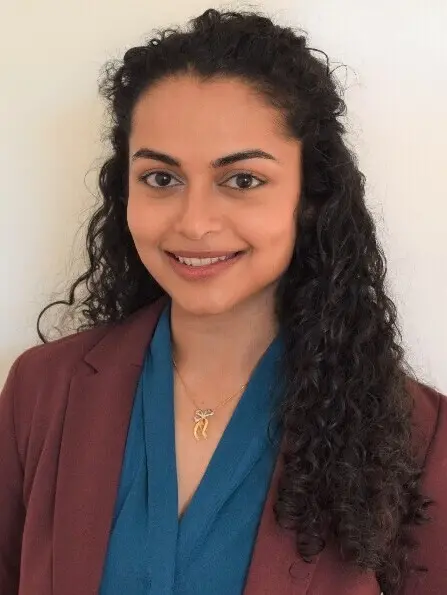Smartphones have revolutionized modern life—mobile computing, texting, pocket video cameras and thousands of apps have changed our lives in immeasurable ways. But Shubhra Pasayat, who joined the University of Wisconsin-Madison’s Department of Electrical and Computer Engineering as an assistant professor in August 2021, thinks one of the most promising bits of the cellphone is one that’s often overlooked: the flashlight.
 Shubhra Pasayat
Shubhra Pasayat
She believes the material that powers the flashlight has the potential to transform the world. Pasayat is interested in the design and growth of gallium nitride and related materials, which are wide- and ultra-wide-bandgap semiconductors. These materials are more energy efficient than silicon and could replace that common semiconductor in the next generation of electronics. When fabricated into high-electron-mobility transistors, these materials could help convert power for electric cars, improve high-frequency communications like 5G and 6G, and improve many other applications.
Gallium nitride is also one of the few materials that produces true blue light in LEDs, which makes it useful in microscopy, lasers, fiber-optic communications and in lighting, such as in a smartphone flashlight. The issue is that gallium nitride is fairly expensive to grow and fabricate. Through her work, Pasayat hopes to make it and other materials industry-ready.
“If we take a look at our society’s technological requirements, gallium nitride serves them quite well. Moving forward, I want to work on not just this wide-bandgap semiconductor but also ultra-wide-bandgap semiconductors such as gallium oxide,” says Pasayat. “My goal is to use these new and novel materials to take them from an emerging phase to a commercially viable phase—so that after a decade or so, we can also rely on these as we rely on silicon semiconductors today.”
Pasayat earned her bachelor’s degree from the Indian Institute of Technology in Kharagpur before working as a senior hardware engineer at the Samsung R&D Institute in Bangalore. In 2015, she began graduate study at the University of California, Santa Barbara, where she worked on various projects including the development of micron-sized red LEDs based on indium gallium nitride, a step toward producing highly efficient, long-lasting micro-LED-based displays.
Pasayat says Madison is an ideal place to continue her work since it has great facilities for growing and characterizing these new materials. The College of Engineering’s state-of-the-art clean rooms will aid her research and the metal-organic chemical vapor deposition reactor in the Engineering Centers Building, equipment normally found in high-throughput industrial facilities, is unique for a university and offers a great advantage in materials development.
Pasayat is stocking her laboratory with unique equipment as well, including a state of the art nano/micro electroluminescence measurement tool. Most importantly, she plans to recruit energetic students to her lab. Pasayat is teaching a course on integrated optics and optoelectronics in fall 2021, which she hopes will stimulate upper-level undergraduates and graduate students to join the field.
“My lab will have a diverse set of people really motivated to show up every day to work on next-generation problems,” Pasayat says. “These are not the types of problems you can solve with a piece of code; you need to be really motivated, have very strong fundamentals and knowledge of physics and need to think outside the box.”
It won’t just be students aiding her research. Pasayat is also excited by the culture of collaboration among researchers at UW-Madison. In particular, she is impressed by the willingness of colleagues to share specialized lab equipment and for the interdisciplinary cooperation she’s seen. “I was struck pretty early on by the warmness of the faculty,” she says. “At Madison, there is an open channel of communication and transparency. That’s something that’s hard to find in a competitive research environment.”